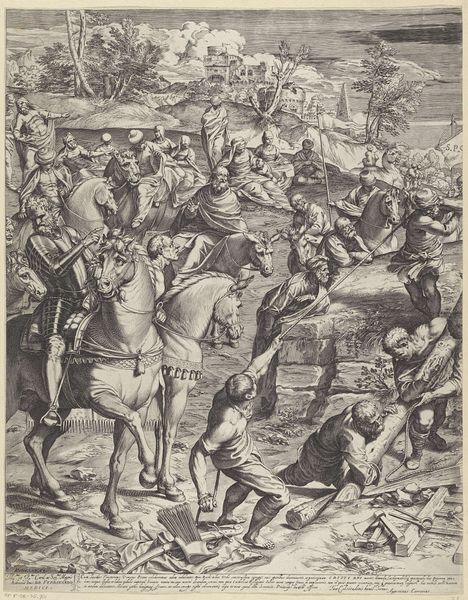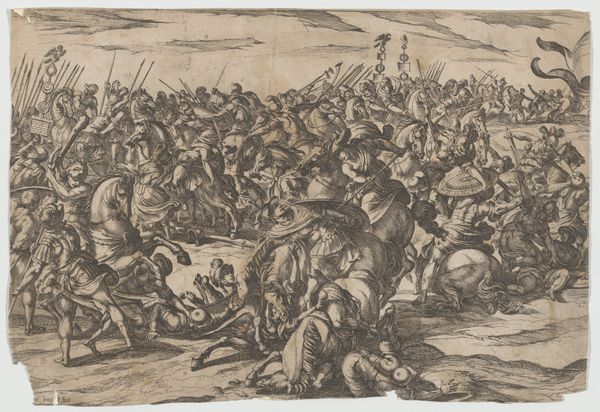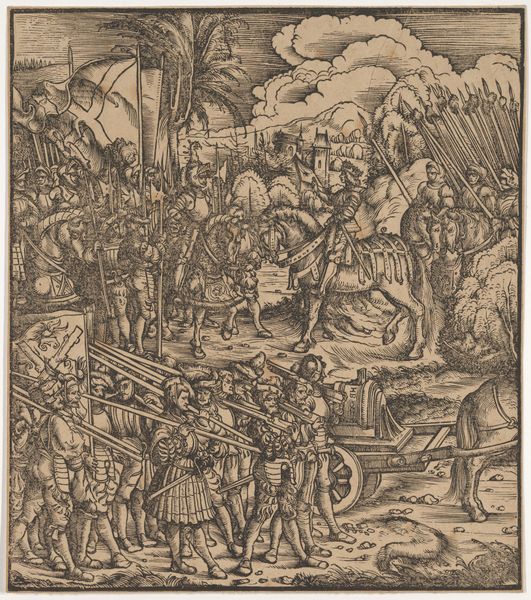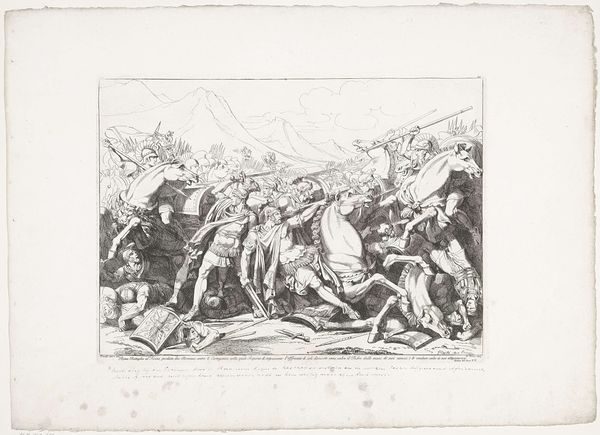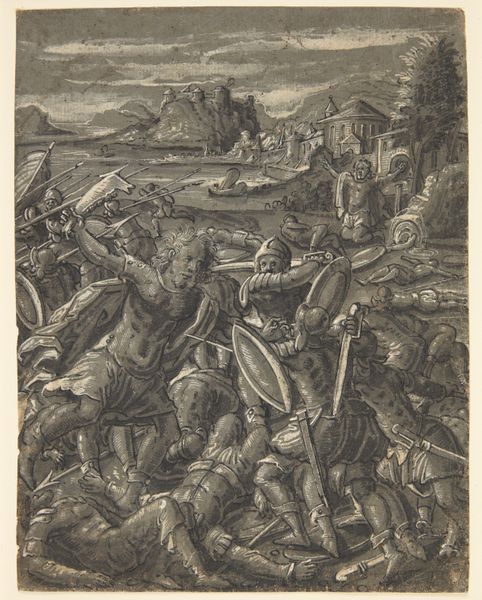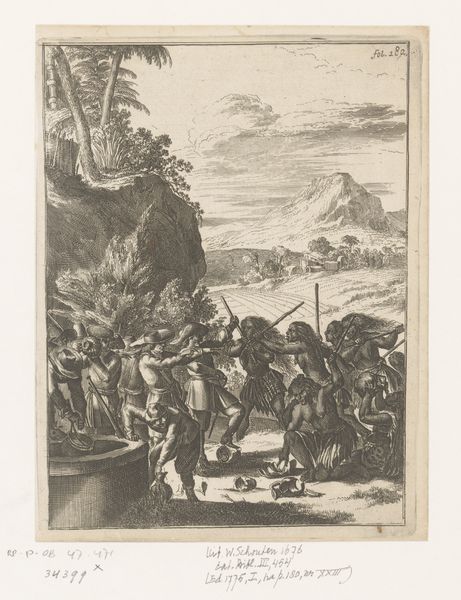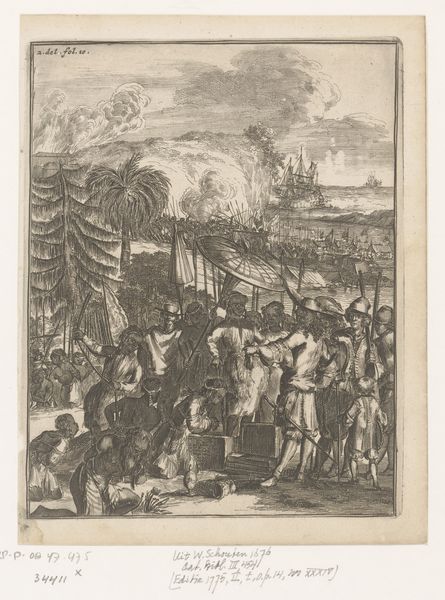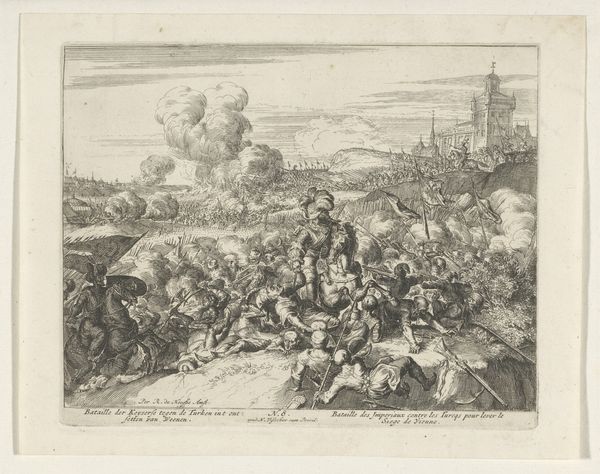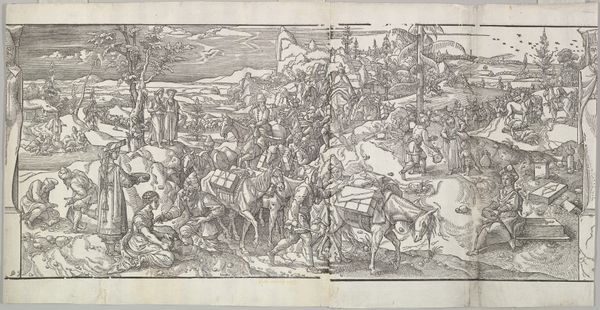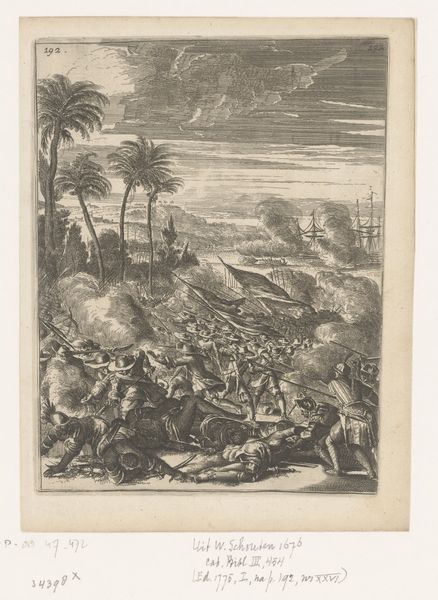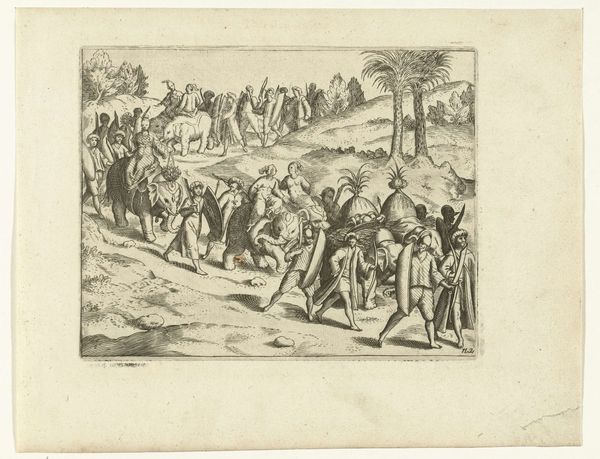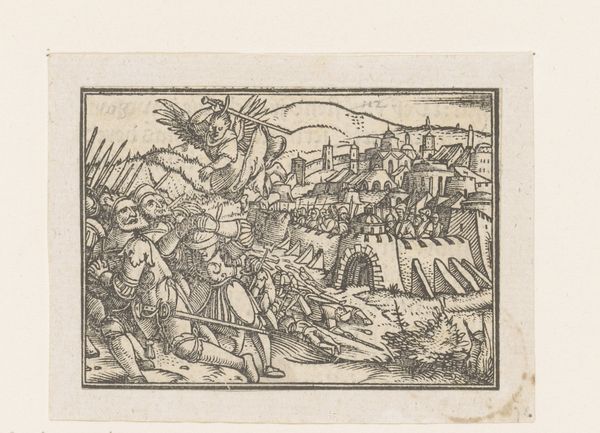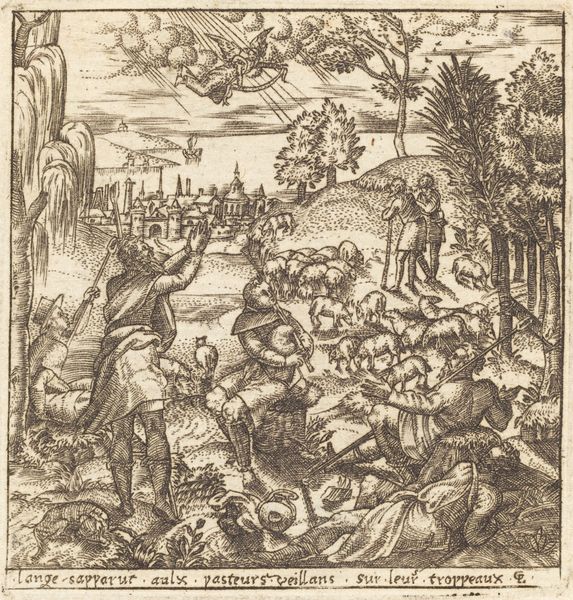
The Battle Near Hulst, from Der Weisskunig 1775 - 1800
0:00
0:00
drawing, print, woodcut
#
drawing
#
medieval
# print
#
landscape
#
figuration
#
woodcut
#
history-painting
#
northern-renaissance
Dimensions: Sheet: 12 7/16 × 8 15/16 in. (31.6 × 22.7 cm)
Copyright: Public Domain
Curator: Editor: Here we have "The Battle Near Hulst, from Der Weisskunig," a woodcut print by Hans Burgkmair, dating roughly between 1775 and 1800. The scene is so chaotic, a jumble of bodies and weapons! What’s your take on this work? Curator: As a woodcut, its very existence points to a process. Notice how the labor involved in carving the block dictated the forms – that decisive black line defining everything. This was reproducible art, tied to distribution and, arguably, shaping perceptions of conflict itself. Editor: So, you’re saying the medium isn’t just a delivery system; it affects the message? The roughness of the woodcut, it’s mass producible format, make it something different? Curator: Precisely. Consider the material context. Woodcuts were relatively cheap and readily available, so its purpose goes hand-in-hand with how the battles of that era were distributed to a wide public, how the image was consumed. Was it used for political purposes? Propaganda, perhaps? Editor: Hmm, I hadn't thought about it that way. It is interesting to notice the material process being inextricably tied to the representation of the battles and how its narrative reached a broader public audience. Curator: Exactly. How does the relatively 'low' status of printmaking influence our perception of history painting? Does it democratize history or dilute it? Editor: I see what you mean. By thinking about its material production, you suddenly reveal the role it plays as cultural object! It really changes the perspective, it goes far beyond depicting conflict on a static page! Curator: Indeed! Paying attention to material means considering power, accessibility, and the very construction of our historical understanding.
Comments
No comments
Be the first to comment and join the conversation on the ultimate creative platform.

